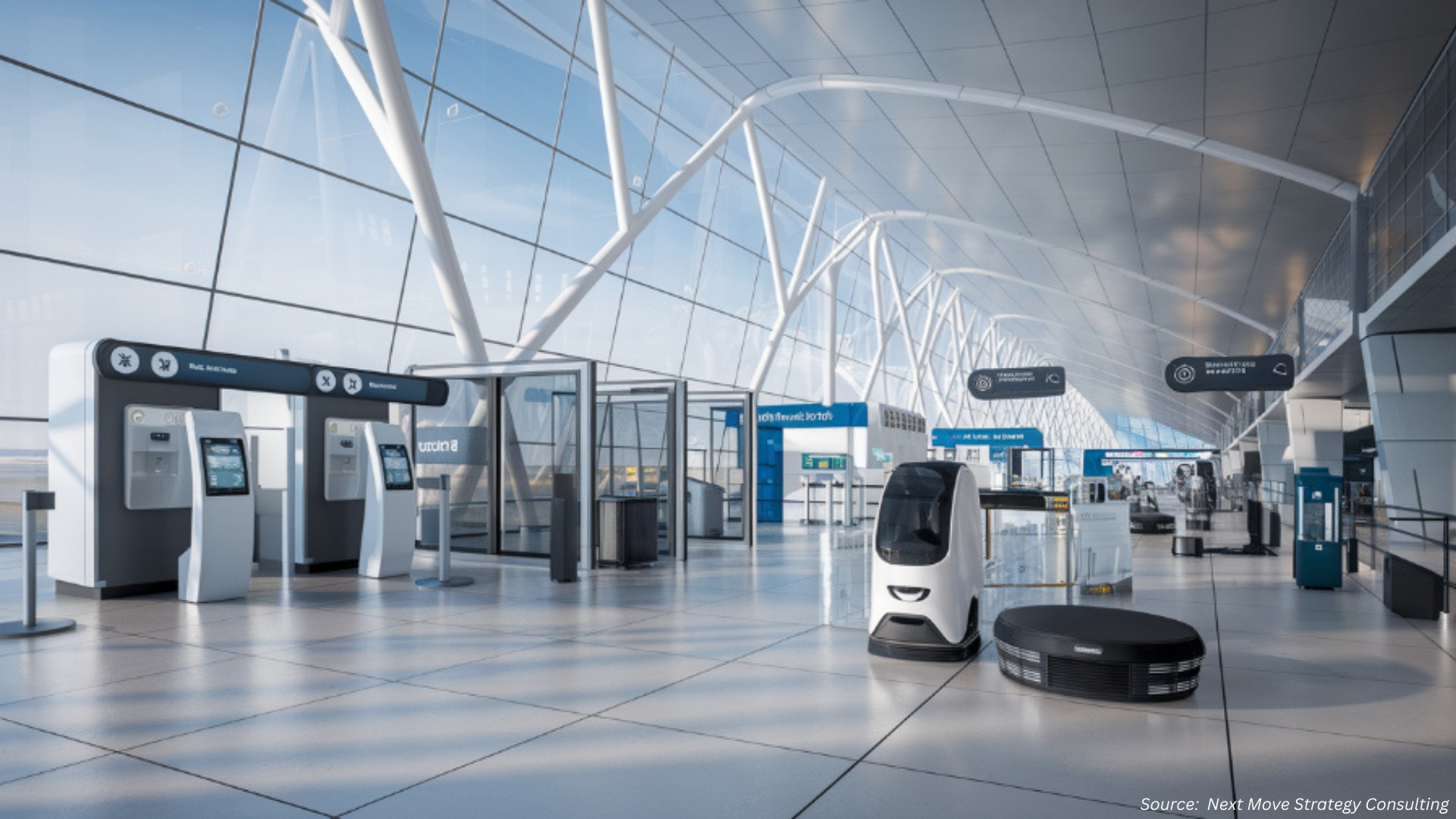
Asia-Pacific Military Ethernet Switches Market by Type (MIL-STD Packaged Solutions and Board-Level Ruggedized Configurations), by Port Speed (100 MBPS, 1 GBPS, 2.5 GBPS, 5 GBPS, 10 GBPS, 25 GBPS, and 50 GBPS), by Network Management (Managed and Unmanaged), and by Application (Unmanned Vehicles, Battlefield Communication C4isr, Avionic & Shipboard System, Data Acquisition & Transmission, Rugged Networks, Combat Vehicles, and Others) - Opportunity Analysis and Industry Forecast, 2024– 2030
Industry: Aerospace & Defense | Publish Date: 06-Jun-2025 | No of Pages: 198 | No. of Tables: 123 | No. of Figures: 88 | Format: PDF | Report Code : AD1295
Market Definition
The Asia Pacific Military Ethernet Switches Market size was valued at USD 99.36 Million in 2023, and is predicted to reach USD 216.18 Million by 2030, at a CAGR of 10.4% from 2024 to 2030.
Military Ethernet switches are a specialized type of Ethernet switches designed for use in military equipment, including communication systems, surveillance platforms, and command and control centers.
These Ethernet switches are rugged and designed, which helps them to endure the harsh military environment, including extreme heat, moisture, contaminants and other challenging conditions.
They are used to integrate various communication channels within the military for information management and centralization. In addition, they provide safe, reliable, and flexible network connections on board military vehicles and aircraft.
Growing Use of UAVs And UUVs in Military Operation is Driving the Growth of the Market
The increasing deployment of unmanned aerial vehicles (UAVs) and unmanned underwater vehicles (UUVs) in military operations is a key factor propelling the expansion of the military Ethernet switches market. UAVs and UUVs are integral to various military functions, including targeted attacks, surveillance, and reconnaissance. The reliable performance of Ethernet switches is essential for the smooth operation of these autonomous platforms, significantly contributing to the robustness of internal communication systems within UAVs and UUVs.
Additionally, the characteristics of military engagements, such as targeted attacks and surveillance, demand instantaneous and secure data transfer. Military Ethernet switches offer the essential bandwidth for applications with high data requirements while ensuring the integrity and confidentiality of transmitted information. Consequently, with data security and communication reliability taking precedence in contemporary military technology, there has been a regional surge in the demand for Ethernet switches.
Increasing Adoption of C4isr Systems Drives the Military Ethernet Switches Market
The growth of the military Ethernet switches market is significantly propelled by the increasing integration of C4ISR systems (Command, Control, Communications, Computers, Intelligence, Surveillance, and Reconnaissance). This is attributed to the crucial role these switches play in facilitating seamless communication and information sharing within the intricate C4ISR systems.
Modern C4ISR systems are tasked with collecting and processing extensive data from various sources, including sensors, satellites, and intelligence reports. To meet the demands of such data-intensive operations, high-bandwidth networks are essential for swift and dependable data transfer. Military Ethernet switches, with their capacity for speed and reliability, ensure the smooth flow of data, contributing to real-time decision-making.
High Cost Associated with Military Ethernet Switches Restrains the Market Growth
Military Ethernet switches command a notably higher price when compared with traditional network bridges, and this price discrepancy stems from several factors. A primary factor contributing to this divergence is the imposition of rigorous quality and performance standards on military-grade equipment. Compliance with stringent criteria for durability, reliability, and security necessitates elevated production costs.
Moreover, the relatively limited production volume of military Ethernet switches, in contrast to the heightened demand for commercial switches, results in diminished economies of scale, consequently driving up per-unit costs.
Additionally, the incorporation of advanced features including encryption, intrusion detection, and environmental hardening in military Ethernet switches further compounds their cost.
This elevated cost of military Ethernet switches presents affordability challenges for certain military organizations, particularly those operating within constrained budgets, thereby impeding the market's growth in such regions.
The Integration of Ethernet Switches into IoT is Expected to Create Ample Opportunities for the Market
The inclusion of Ethernet switches in Internet of Things (IoT) applications within the military sector presents significant opportunities for the market. IoT technology is progressively gaining traction in military operations, encompassing a broad spectrum of applications ranging from battlefield surveillance to asset tracking and logistics management. Serving as the backbone of these IoT networks, Ethernet switches play a pivotal role in ensuring the smooth flow of data between sensors, devices, and control centers.
With the continuous expansion of military IoT deployments, there is an increasing demand for Ethernet switches that can deliver high-speed, low-latency connectivity while adhering to stringent security and reliability standards. Companies specializing in military Ethernet switches that can effectively address these specific requirements and support the seamless integration of IoT technology into defense operations are poised to capitalize on the growing market.
China Holds the Dominant Market Share in Asia-Pacific Military Ethernet Switches Market
The growth of the military Ethernet switches market is significantly propelled by the increasing integration of C4ISR systems (Command, Control, Communications, Computers, Intelligence, Surveillance, and Reconnaissance). This is attributed to the crucial role these switches play in facilitating seamless communication and information sharing within the intricate C4ISR systems.
Modern C4ISR systems are tasked with collecting and processing extensive data from various sources, including sensors, satellites, and intelligence reports. To meet the demands of such data-intensive operations, high-bandwidth networks are essential for swift and dependable data transfer. Military Ethernet switches, with their capacity for speed and reliability, ensure the smooth flow of data, contributing to real-time decision-making.
Military Ethernet switches find increasing deployment in armored vehicles and aircraft, demonstrating their capability to expedite information flow during combat operations. These specialized switches offer numerous advantages over conventional networking technologies employed in armored vehicles and aircraft. Operating at significantly higher speeds than legacy systems, military Ethernet switches facilitate nearly instantaneous communication between various units and command centers, leading to faster decision-making, real-time situational awareness, and a more coordinated response to dynamic and rapidly changing battlefield scenarios.
Competitive Landscape
The market players operating in the Asia Pacific Military Ethernet Switches market include Amphenol Corporation, Microsemi Corporation, Aeronix Inc, Nova Integration Solutions, Ontime Networks Llc, Red Lion, Siemens AG, Techaya Inc., Trident Infosol Pvt. Ltd., Curtiss-Wrights.
Asia-Pacific Military Ethernet Switches Market Key Segments
By Port Speed
-
100 MBPS
-
1 GBPS
-
2.5 GBPS
-
5 GBPS
-
10 GBPS
-
25 GBPS
-
50 GBPS
By Product Type
-
MIL-STD Package Solutions
-
Board-Level Ruggedized Configurations
By Network Management
-
Managed
-
Unmanaged
By Application
-
Ground Communication
-
Naval Communication
-
Airborne Communication
By Country
-
China
-
India
-
Japan
-
South Korea
-
Rest of Asia Pacific
REPORT SCOPE AND SEGMENTATION:
|
Parameters |
Details |
|
Market Size in 2023 |
USD 99.36 Million |
|
Revenue Forecast in 2030 |
USD 216.18 Million |
|
Growth Rate |
CAGR of 10.4% from 2024 to 2030 |
|
Analysis Period |
2023–2030 |
|
Base Year Considered |
2023 |
|
Forecast Period |
2024–2030 |
|
Market Size Estimation |
Million (USD) |
|
Growth Factors |
|
|
Countries Covered |
5 |
|
Companies Profiled |
10 |
|
Market Share |
Available for 10 companies |
|
Customization Scope |
Free customization (equivalent up to 80 working hours of analysts) after purchase. Addition or alteration to country, regional, and segment scope. |
|
Pricing and Purchase Options |
Avail customized purchase options to meet your exact research needs. |
KEY PLAYERS
-
Amphenol Corporation
-
Microsemi Corporation
-
Aeronix Inc.
-
Nova Integration Solutions
-
Ontime Networks Llc
-
Red Lion
-
Siemens AG
-
Techaya Inc.
-
Trident Infosol Pvt. Ltd.
-
Curtiss-Wrights




















 Speak to Our Analyst
Speak to Our Analyst

























